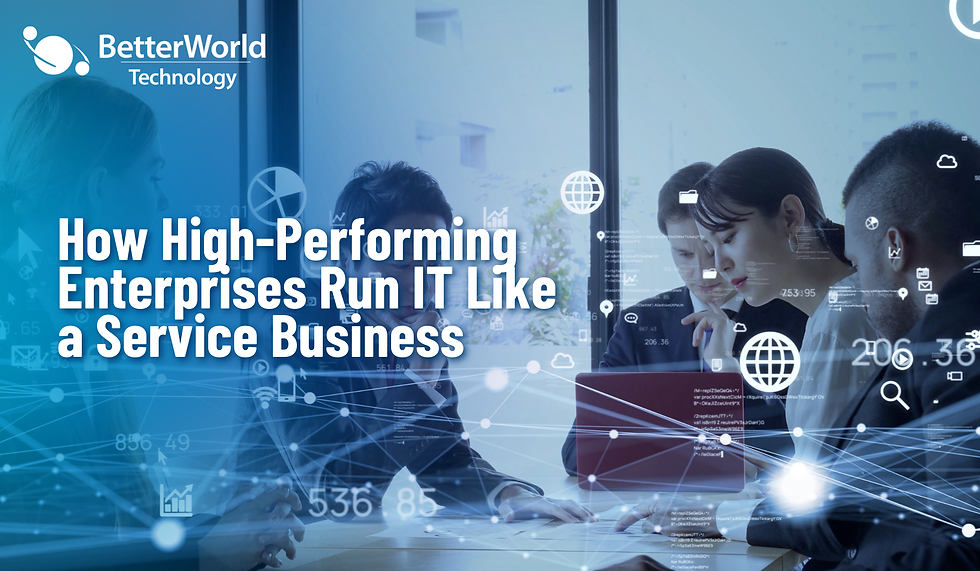How a vCISO Helps Enterprises Align with NIST, ISO, and Other Security Frameworks
- James Gorman

- Oct 22
- 4 min read
Modern enterprises face increasingly complex cybersecurity challenges. As regulatory frameworks tighten and threats evolve, companies need more than just reactive tools—they need strategic leadership. A Virtual Chief Information Security Officer (vCISO) offers a powerful, scalable solution that enables enterprises to align with key frameworks like NIST, ISO, GDPR, HIPAA, and PCI-DSS without committing to the overhead of a full-time executive.
Why Enterprises Struggle with Framework Alignment
Enterprise IT and security teams often encounter several barriers:
Disjointed security policies that aren’t aligned with business priorities
Lack of internal expertise to interpret and implement complex frameworks
Siloed operations with minimal communication between security, compliance, and executive leadership
Underdeveloped incident response planning and weak governance structures
These gaps result in non-compliance, increased risk exposure, and inefficiencies across departments.
BetterWorld Technology understands this landscape intimately. Our vCISO services deliver the executive level guidance modern enterprises need, without the cost of a full-time hire. By integrating strategy, governance, and ongoing optimization, we help build sustainable, resilient security programs that evolve with your business.
The Strategic Role of a vCISO
A vCISO is not just a consultant. They serve as an embedded leader who guides your organization through security planning, policy development, risk management, and continuous improvement.
Key strategic responsibilities include:
Translating compliance requirements (e.g., NIST SP 800-53, ISO/IEC 27001) into actionable internal controls
Advising executive leadership and the board on security investments
Coordinating risk assessments and internal audits
Ensuring readiness for external audits and certifications
BetterWorld provides seasoned cybersecurity advisors who serve as trusted partners, helping enterprises assess risk, define strategy, and implement mature, scalable security programs. We embed cybersecurity directly into the fabric of your operations, ensuring it supports business objectives rather than obstructs them.
Frameworks Covered by Enterprise vCISO Services
Here's a look at how a vCISO can facilitate alignment across key security and compliance frameworks:
Framework | What It Focuses On | vCISO Role |
NIST (SP 800-53 / CSF) | Risk management, continuous monitoring | Map controls to enterprise policies, coordinate audits, lead RMF implementation |
ISO/IEC 27001 | ISMS development and certification | Guide ISMS documentation, lead gap analysis, drive corrective action plans |
HIPAA | Health data security and privacy | Develop administrative and technical safeguards, ensure ongoing compliance reviews |
PCI-DSS | Payment card security standards | Enforce segmentation, validate access controls, oversee annual compliance tasks |
GDPR | EU data protection regulations | Interpret data processing flows, manage DPIAs, oversee data subject rights processes |
BetterWorld's vCISO services ensure seamless integration and continuous cybersecurity optimization through a three-step process. We elevate your security posture with expert virtual leadership that’s tailored to current needs and scalable for future growth.
The Three-Step Process to Framework Alignment
Step 1: Assessment & Strategy
The first step is to evaluate the current cybersecurity posture. BetterWorld’s vCISO identifies key gaps between your current environment and the relevant frameworks. We then build a customized roadmap aligned with your goals, risk appetite, and compliance obligations. Every initiative is prioritized, measurable, and actionable.
Step 2: Knowledge Transfer
We embed directly into your organization’s teams to ensure cross-functional collaboration. Roles, responsibilities, and workflows are clearly defined. Our experts deliver targeted training so your internal team can uphold and extend the security program even after our engagement.
Step 3: Ongoing Guidance
Security is not a one-and-done project. Our vCISO offers continuous oversight, tuning policies and processes as new threats and regulations emerge. We routinely evaluate metrics, test incident response plans, and update your governance framework to stay aligned with best practices.
Real Enterprise Impact from Strategic Security Leadership
Our clients benefit from:
Expert vCISO leadership with immediate cost savings and no long-term commitment
Strategic policy development and enforcement that supports business objectives
Improved audit and compliance readiness through documented governance
Real-time monitoring systems and automated reporting
Stronger incident response planning and operational resilience
A unified security approach that enhances executive and board-level visibility
Whether your enterprise is preparing for ISO certification, mapping to NIST controls, or building a GDPR-compliant data strategy, BetterWorld acts as your strategic cybersecurity partner. We serve as a trusted guide to the C-suite and board, helping ensure your security initiatives protect assets and enable innovation.
Align Your Enterprise Security with Confidence
Many enterprises delay security framework alignment due to lack of leadership, confusion over requirements, or fear of disruption. This leads to costly breaches, failed audits, and reputational harm.
With BetterWorld’s enterprise vCISO services, you don’t just meet compliance. You embed security into your culture. Our advisors ensure compliance with key frameworks like GDPR, HIPAA, and PCI-DSS, minimizing exposure while enhancing audit readiness. Our vCISO develops, tests, and refines incident response plans to prepare your team for potential breaches, while employee education builds a culture of security awareness that strengthens your first line of defense.
Make Cybersecurity a Business Advantage
Don't wait for a breach or a failed audit to take action. Security should empower your business, not slow it down.
Ready to align your enterprise with NIST, ISO, and beyond? Talk to a vCISO expert today.
Make your cybersecurity strategy work for your business, starting now.
FAQs
What is a vCISO and how can it help enterprises align with NIST or ISO frameworks?
A Virtual Chief Information Security Officer (vCISO) provides outsourced cybersecurity leadership, helping enterprises interpret, implement, and maintain compliance with security frameworks like NIST SP 800-53 and ISO/IEC 27001. A vCISO acts as a strategic advisor, guiding governance, risk management, and security architecture to align with regulatory and business goals.
Which security frameworks can a vCISO help enterprises comply with?
A vCISO can help organizations align with several major security and compliance frameworks, including NIST Cybersecurity Framework (CSF), ISO/IEC 27001, HIPAA, PCI-DSS, and GDPR. They ensure the organization’s policies, processes, and technologies meet the specific requirements of each framework.
Why do enterprises choose a vCISO instead of hiring a full-time CISO?
Enterprises often choose a vCISO to gain executive-level cybersecurity leadership without the high cost of a full-time hire. A vCISO offers flexibility, scalability, and broad industry experience, making them ideal for managing compliance, risk, and strategy across multiple frameworks while adapting to evolving threats.
How does a vCISO help during an audit or certification process?
A vCISO supports enterprises through audits by conducting gap assessments, preparing documentation, aligning internal controls, and coordinating with auditors. Whether it’s for ISO certification, PCI-DSS compliance, or NIST readiness, the vCISO ensures the enterprise is audit-ready and maintains compliance long-term.
What industries benefit most from vCISO services for framework alignment?
Industries with strict regulatory demands—such as healthcare, finance, legal, and enterprise tech—see the greatest benefit from vCISO services. These sectors rely on vCISOs to help meet HIPAA, PCI-DSS, ISO 27001, or NIST standards while minimizing risk and maintaining operational continuity.








